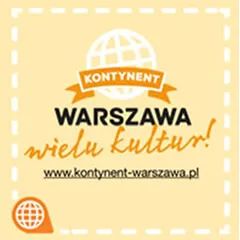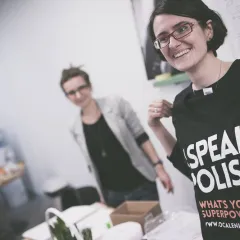Holland Poland the two nephews… According to unofficial data around two thousand Dutchmen live in Warsaw. However, it turns out, that apart from the stories about clogs, tulips and windmills, in general, we know less than we think about the Dutch. We tend to think about the Netherlanders as open, tolerant and honest people. However, there are also opinions that they are exceptionally mean, inhospitable and too liberal as far as drugs are concerned. On the other hand, the Dutch perceive us as friendly and helpful people but they also say that we are a bad organized nation, we don’t know how to be at ease and we drink too much alcohol. Therefore, it is worth mentioning that what affected the most the differences between Dutch and Polish worldviews was religion. Until the sixties in 20-th century most of the Dutch were Protestants and Catholics were in minority. Today, almost half of Dutch population doesn’t formally belong to any particular religious community. Nevertheless, some social norms and behavioral patterns have its background in Protestantism.
For the Pole who lives according to the rule “keep up with the Joneses” it is inexplicable that the Dutch think that showing off somebody’s fortune or position is in bad taste. This is why, for example, the president of the bank in Amsterdam doesn’t commute to work by his cool car but he simply rides a bike. When we look carefully to the Dutch it may occur that tolerance- their “trade mark”, is only an illusion. A modern Amsterdam- open to coexistence of people of different sexual orientation or to the usage of such drugs as, for example, marihuana, seems to be a mainstay of tolerance. But yet, it is possible that a pair of homosexuals will come across with more tolerance in a small hair dresser’s village than in a big district in Amsterdam. Poles also have a lot of work to do. We are well know for so called “polish complex”. While being asked abroad where are we from we say: “Poland”. But when our interlocutor misheards us and asks: “Holland”?, we usually don’t deny it.
From the Netherlands to Saska Kępa
Initially, the Dutch merchants came to polish harbors on splendid sailing ships and traded with everyone and everywhere according to an old rule: buy cheap and sell dear. With time, because of religious persecutions, Dutch Catholics started to emigrate to Poland and settled down on wetlands (mainly on Żuławy and the Vistula basin). The local population was not able to cultivate such grounds, unlike the Dutch, who already specialized in drying such low-lying lands. Nowadays, hardly anybody knows that one of today’s cult district in Warsaw –Saska Kępa, was inhabited almost in one hundred percent by the Dutch settlers. Among them, was Tylman from Gameren, who designed many magnificent residences in Warsaw.
His works include Krasiński Palace, called also Republic of Poland Palace, Ostrogskich Palace and Ujazdowski Castle, which was rebuilt by Tylman for Stanisław Herakliusz Lubomirski. For his achievements Tylman received the title of nobility.
For several years the Netherlands has been the largest investor in Poland. In the heart of Warsaw Dutch investor built a Golden Terraces complex, which was opened by the coach of polish football team, Leo Beenhhaker. Today, the Dutch visit Poland mainly on business but sometimes they decide to stay longer. While being asked for the reason of staying in Poland they diplomatically reply: “Well, love is where you find it”. To express their warm feelings toward Poland in year 2008 Embassy of the Kingdom of the Netherlands gave the name to a new kind of tulip after the name of Polish First Lady, Maria Kaczyńska. The tulip of Mara Kaczyńska is cream-yellow and it blooms after eighteen months. Since then, the new kind of tulips have been a decoration of the Presidential Palace yard in Warsaw, stressing good Polish-Dutch relations.
Dutch House in Poland
Dutch House in Warsaw located at 9 Katowicka Street, is the headquarter of funs of the Netherlands’ culture. Polish-Dutch Friendship Association is located here- an organization which main goal is to deepen Polish-Dutch relations. During monthly meetings its members have an opportunity to talk to Polish and Dutch representatives of politics, economy and culture, whose work, interests and sympathies are bound with both countries. PDFA organizes lectures, film shows, meetings with guests from the Netherlands and lessons of Dutch language as well. There is also a library, a reading-room and video collection of the association.
At the Dutch House also functions an informal Club Punt.NL, that organizes open cultural meetings with invited guests (writers, artists, etc.) or thematic meetings (usually in Dutch).
www.tppn.pl
You can have a chat in Cafe Lente
Lente in Latin means “slowly” and in Dutch “spring”. The coffe-house was opened by two Dutchmen who live in Warsaw. Their intention was to refer to Dutch “bruine café’s” (“brown cafés”), which are a climatic meeting spots, very different from a typical chain of coffee-houses. You can eat here a good and healthy food, you can have a chat in peace and immerse yourself in reading a book or a newspaper. In Lente there is a “slow food” rule, which means that homemade meals prevail and most of the products are brought straight from Holland- cheeses, cookies, syrups and other supplements. Particularly noteworthy, is more and more popular Argentinean drink, yerba mate. Belgian ales served in Lente, with the reputation of high quality, are gaining more and more fans as well. Lente is also a place of cultural meetings.
Café Lente, 8 Kubusia Puchatka Street
www.lente.waw.pl
It is good to have a Dutch bike
Bicycle culture is developing slowly in Warsaw. Probably a lot of time will pass until we see first crowded bike-parks, so familiar to us from Amsterdam. However, the group of Dutch bikes’ funs is still growing, mainly due to a trendy, classic and most of all comfortable design of those bikes. You recognize a Dutch bicycle at once and you want to have immediately. Characteristic elements of such bikes are: big wheels, wide handlebars, gears, and massive carrier, which is often used in Holland to carry an extra passenger on it. Other typical elements are: reflective tail lamp, a big head lamp and a chain case to prevent the chain from entrapping a trouser leg. Another distinctive feature of those bikes is a white stripe on a mudguard, which makes the bike more visible. In Warsaw a top leader in selling imported Dutch bikes of Union and Batavus brands is the shop: www.wygodnyrower.pl
However if you have a need to buy an unconventional Dutch bike, made to order, you should visit this site: www.sztukarowerowa.pl. You may also try to find a second-hand model on a bike exchange:
www.gieldarowerowa.pl
An Embassy protected by a creeper
Many Warsaw dwellers know a modern building of Embassy of the Kingdom of the Netherlands. It was designed by a Dutch architect, Erik van Egeraat. What attracts attention is a steel fence with elements of plants that resemble a naturalistic character.
Although, embassies always look a little bit like fortresses - they need to have high fences and gates, the architect managed to create an atmosphere of accessibility. But most of all, the Embassy is one of the most dynamic centre promoting culture of the Netherlands. It organizes exhibitions, festivals, film reviews and meetings promoting Dutch language.
Embassy of the Kingdom of the Netherlands, 10 Kawalerii Street
www.nlembassy.pl
Loesje - express your opinion!
Loesje is an organization started in Arnhem in Holland twenty five years ago. Currently it is active in over thirty countries around the world and since December last year also in Warsaw. In various countries Loesje branches act in diverse ways. Creative writing workshops are one of the most characteristic projects of Loesje. Their aim is to inspire the active practice of expressing thoughts and constructive social criticism. Loesje posters - all in the same characteristic layout, appear in public space and become an expression of ideas of members from particular branches. Loesje in Warsaw organizes regularly creative writing workshops, which are opened to all interested. They take place every last Sunday of the month in the Dutch café Lente.
www.loesje.org
www.loesje.pl
Oh a Dutchman! (O! Holender) - The Dutch street party for Warsaw
This street party resembles Queen’s Day - the annual Dutch holiday celebrated on April 30th. Currently, Queen’s Day is more than a national holiday. It is most of all the day of “freemarket” – of goods, services and opinions. During this day everyone is allowed to sell, to perform and to present his or her culture. You just need to demonstrate your creativity.
In the program you will find:
- Dutch book-fair.
- Quiz about Holland.
- Dutch cheeses and herrings.
- Dutch bikes’ rally and a ride through the city.
- The cinema: classics of the Dutch cinema.
- An exhibition of Dutch art.
- For children: traditional games, films, puppet theatre.
You will also find information points where you will get information about lessons of Dutch language and about opportunities of finding a job in Holland.
Everything in the atmosphere of the Dutch Queen’s Day
Oh Dutchman! This is an initiative taken by many organizations that unite the Dutch who live in Poland and the Poles who feel close to Holland. The aim of such street party is to unite district and town. In Holland people say: “Better a good neighbour than a distant friend”.
The organisers of those event want to inspire other nations’ members, who are present in Warsaw, to organize their street parties. They hope to contribute actively to the promotion of Warsaw and to spreading of tolerance, in practice, by experience and cognition. The event is Dutch but everybody can take part in it. The only limit is space on the street.
www.oholender.pl
Editorial staff: Magdalena Heliasz, Redbad Klijnstra, Barbara Kowalkowska / Warsaw, May 2009
Translated by: Justyna Bajus-Chmiel
This text comes from the Dutch bulletin Continent Warsaw which can be downloaded [ here ]







































